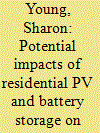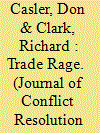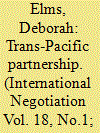|
|
|
Sort Order |
|
|
|
Items / Page
|
|
|
|
|
|
|
| Srl | Item |
| 1 |
ID:
172454


|
|
|
|
|
| Summary/Abstract |
This article explores how the Great Depression in 1929 led to the expansion of illicit circuits globally, and examines the ways in which the introduction of anti-smuggling campaigns came to consolidate the border regimes in Turkey and French Syria. The global economic downturn in the late 1920s led states to embrace protectionist measures such as heightened tariffs and import quotas, all designed to protect local industries and maintain a favorable trade balance. The introduction of such measures, however, often resulted in the emergence of highly profitable illicit circuits, including in the borderland between Turkey and Syria. Here, a sturdy coalition of producers, shop owners, smugglers, trackers, and peddlers began to smuggle into Turkey a range of goods from silk textiles to cigarette papers, while funneling out narcotics into Syria. By seeking the global trajectories of such commodity flows, this article examines the impact of these borderland mobilities on the making of Turkey's southern border by exploring the local and bureaucratic responses to a rapidly changing world economic order in the aftermath of the Great Depression.
|
|
|
|
|
|
|
|
|
|
|
|
|
|
|
|
| 2 |
ID:
098687


|
|
|
|
|
| Publication |
2010.
|
| Summary/Abstract |
Building mounted micro-wind turbines and photovoltaics have the potential to provide widely applicable carbon free electricity generation at the building level. Photovoltaic systems are well understood and it is easy to predict performance using software tools or widely accepted yield estimates. Micro-wind, however, is far more complex and in comparison poorly understood. This paper presents the key findings of the building mounted (<2 kWp) turbine component of the UK micro-wind trial undertaken by the Energy Saving Trust in 2008/09. The monitored performance of 39 horizontal axis turbines in urban, suburban and rural locations is discussed alongside the accuracy of predictive wind speed tools for the sites. The performance of urban and suburban micro-wind sites in the trial was poor with annual generation of less than 75 kWh/m2 swept area, the majority of which were less than 25 kWh/m2. Good rural sites had an annual generation of between 100 and 280 kWh/m2, far less than the nominal 360 kWh/m2 (10% load factor for a typical turbine) that is often assumed. In the light of these findings, the potential impact of the UK's latest policy instrument, the 2010 micro-generation tariffs, is considered for both micro-wind and photovoltaics.
|
|
|
|
|
|
|
|
|
|
|
|
|
|
|
|
| 3 |
ID:
166358


|
|
|
|
|
| Summary/Abstract |
Australia has one of the highest penetrations of residential PV in the world and is projected to see substantially more deployment in coming years, with a growing proportion of this being coupled with battery energy storage (BES). Previous analysis of the implications of these residential distributed energy resources (DERs) has tended to focus on the individual private benefits to households that deploy them, their direct technical and revenue impacts on network businesses, or broader electricity industry implications. This paper seeks to quantify the economic impacts of residential PV and BES on electricity network businesses, from residential to wholesale market region level. One key impact is reductions in network business revenues as households purchase less electricity from the grid. However, we also consider the potential savings for network businesses as these PV and BES deployments reduce peak network demand from residential to wholesale market level, a key driver of network investment and hence network business costs. Our findings for the Sydney region suggest that potential network investment cost reductions could even outweigh the loss of revenue. Tariff design will have a key role in ensuring that residential PV and BES deployment offers value both to households as well as network businesses.
|
|
|
|
|
|
|
|
|
|
|
|
|
|
|
|
| 4 |
ID:
195349


|
|
|
|
|
| Summary/Abstract |
We consider trade policy for a private market good that is also valuable for the production of military force. In a two-country model with both contested and uncontested resources, we show necessary and sufficient conditions for the importing country to restrict trade with quota and subsidy combination in equilibrium. Equilibrium can involve subsidization by the exporting country with equilibrium total of the importing country increasing in this subsidy.
|
|
|
|
|
|
|
|
|
|
|
|
|
|
|
|
| 5 |
ID:
180223


|
|
|
|
|
| Summary/Abstract |
Politicians frequently issue public threats to manipulate tariffs but only sometimes follow through. This behavior theoretically ought to generate audience costs. We therefore test the validity of audience costs in trade war settings through a vignette-based survey experiment. The vignettes describe a hypothetical situation involving the U.S. and a second country (China, Canada, or unspecified) with whom the U.S. has a trade deficit. The president (Democrat, Republican, or unspecified) either maintains the status quo, threatens to impose tariffs and backs down, or threatens to impose tariffs and follows through. Our findings highlight differences between security and trade conflict when it comes to audience costs and presidential approval. While Americans sanction the president for issuing a threat to raise tariffs, they generally support backing down. Regression modeling and text analysis of a free response question from our surveys suggest this is because consumers are wary of paying the costs of tariffs.
|
|
|
|
|
|
|
|
|
|
|
|
|
|
|
|
| 6 |
ID:
041076


|
|
|
|
|
| Publication |
London, WeidenFeld and Nicolson, 1969.
|
| Description |
ix, 371p.
|
|
|
|
|
|
|
|
|
|
|
|
Copies: C:1/I:0,R:0,Q:0
Circulation
| Accession# | Call# | Current Location | Status | Policy | Location |
| 003381 | 337/BHA 003381 | Main | On Shelf | General | |
|
|
|
|
| 7 |
ID:
120716


|
|
|
|
|
| Publication |
2013.
|
| Summary/Abstract |
Abstract Much has been made of the "spaghetti or noodle bowl" problem of overlapping preferential trade agreements (PTA). A new PTA, the Trans-Pacific Partnership (TPP), currently under negotiation between eleven states - Australia, Brunei, Canada, Chile, Malaysia, Mexico, New Zealand, Peru, Singapore, the United States and Vietnam - is intended to help address this issue. The TPP will lower or eliminate barriers to trade among the partners. But officials are not operating in a vacuum as they negotiate this new agreement. Instead, they must contend with rules created in previous agreements, many of which link TPP partners together in ways that constrain their options now. This article looks in detail at negotiations over market access in goods to better understand the tradeoffs faced by negotiators. Unfortunately, some of the decisions made so far after three years of talks suggest that the TPP market access deal could end up being just another twisted noodle in a crowded bowl.
|
|
|
|
|
|
|
|
|
|
|
|
|
|
|
|
|
|
|
|
|